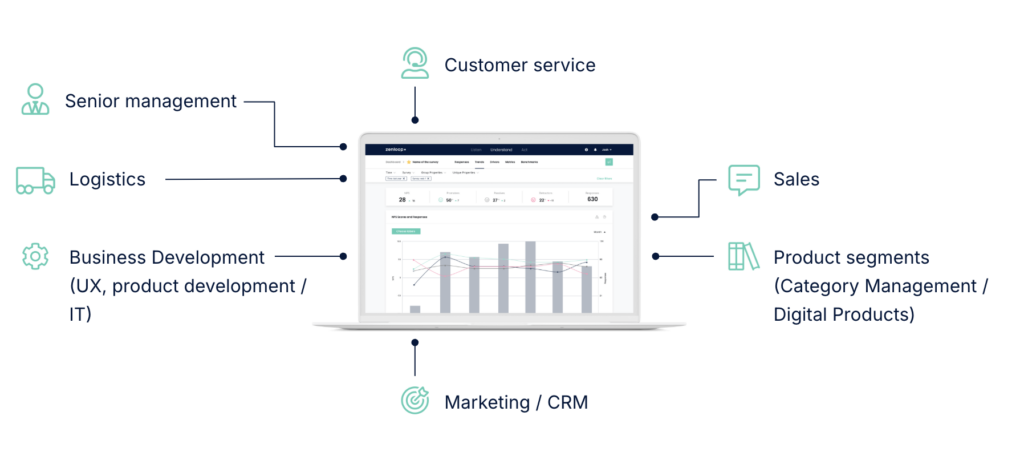Sentiment analysis is an essential business intelligence tool in marketing that helps companies improve their brand image through the evaluation of customer comments.
How Can Customer Satisfaction Be Measured?
Customer satisfaction is often measured through standardized surveys and key performance indicators such as the Net Promoter Score (NPS).
Common questions in online shopping are: “How satisfied were you with the purchase process?” or “Would you recommend our brand to a friend or colleague?”
After the buyer has given a rating from 0–10, they can leave a comment.
The average rating provides an indicator of how satisfied customers generally are. This is called the Net Promoter Score.
The goal of every company is to increase customer satisfaction.
The Net Promoter Score (NPS) measures the willingness of customers to recommend a product to friends or colleagues.
The rating given on a scale from 0 to 10 is classified into one of the three NPS categories: Promoters, Passives, or Detractors.
Promoters are customers who gave a rating of 9 or 10. They are extremely satisfied and gladly recommend the product to family, friends, and acquaintances without hesitation.
Passives give the product a rating of 7 or 8 and are only moderately satisfied with their purchase. It is possible that they still look at competitors and, if convinced, switch to them and do not remain loyal to the brand.
Detractors give a rating between 0 and 6 in the survey and represent consistently dissatisfied customers. These can influence the popularity and reputation of the brand through negative comments. Nevertheless, the comments of dissatisfied customers are valuable, because through them, brands can find out exactly what needs to be improved.
So far, so good. In the next step, after the rating, the customer can now leave a comment. That is the real gold!
How Can Customer Feedback Be Collected?
Every brand naturally has its own channels that are easily accessible—for example, the online shop, emails, or even offline in physical stores. Here, the company can easily integrate customer surveys at all points of the customer journey. In-store, customers can be directed to an online survey via flyers with QR codes.
In addition, companies also offer their products on third-party platforms such as Amazon or Zalando, where customer feedback is found in the reviews of the respective products.
Customers also often have the opportunity to leave a review on comparison platforms. Well-known sites include Trustpilot, Google Reviews, Yelp, Facebook Reviews, Idealo Ratings, and Check24 Ratings.
How can a holistic view of customer feedback be created?
To create a comprehensive picture of customer feedback, a single platform that consolidates all the data and feedback from various channels, analyzes it, and ultimately derives improvements from it would be a good solution to this problem.
Platforms like zenloop make this process possible.
Currently, a large number of customer comments are spread across different channels. This often leads to a lack of a clear overall view of customer emotions.
With this single-platform approach, this problem can be resolved.
The following illustration places customer feedback at the center. Processing this feedback allows different departments—whether customer service, sales, or logistics—to be informed and make targeted improvements based on it.

Ultimately, it can be said that sentiment analysis is important for companies to quickly and easily draw conclusions about how customers feel and to identify the types of emotions expressed, such as complaints or joy.








